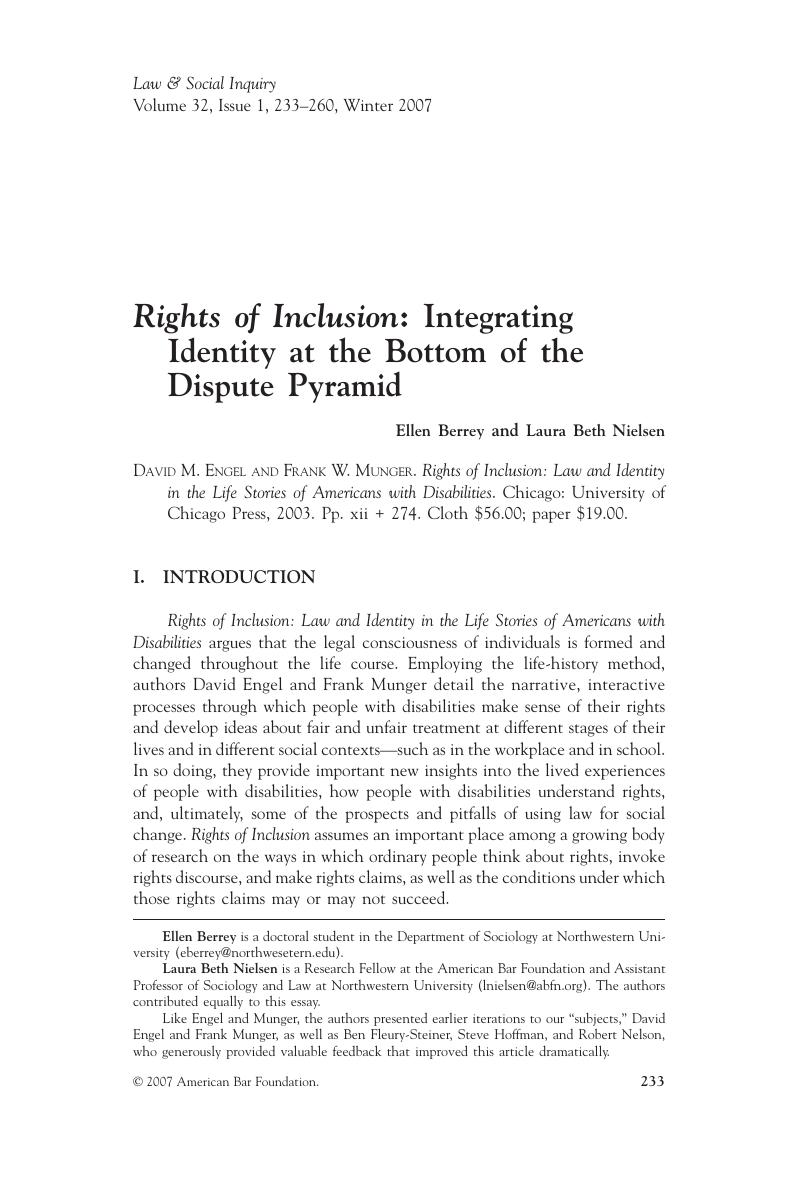Crossref Citations
This article has been cited by the following publications. This list is generated based on data provided by Crossref.
Berrey, Ellen
Hoffman, Steve G.
and
Nielsen, Laura Beth
2012.
Situated Justice: A Contextual Analysis of Fairness and Inequality in Employment Discrimination Litigation.
Law & Society Review,
Vol. 46,
Issue. 1,
p.
1.
Greenhouse, Carol J.
2020.
Insiders, Outsiders, Injuries, and Law: Revisiting ‘The Oven Bird's Song’ By Mary Nell Trautner (ed.), Cambridge: Cambridge University Press, 2018. 314 pp. ISBN: 978-1-10718-840-7 £69.99.
International Journal of Law in Context,
Vol. 16,
Issue. 1,
p.
97.
Young, Kathryne M.
and
Billings, Katie R.
2020.
Legal Consciousness and Cultural Capital.
Law & Society Review,
Vol. 54,
Issue. 1,
p.
33.
Shikako, Keiko
Lai, Jonathan K. Y.
Saxena, Shikha
and
Sabatello, Maya
2023.
Neurodevelopmental Pediatrics.
p.
753.
Quadrelli, Isabella
and
Uboldi, Anna
2024.
Doing the right thing.
Oñati Socio-Legal Series,
Vol. 14,
Issue. 4,
p.
1148.



